Top 10 Electric Vehicles (EVS) in 2020
Sharing its platform with the related GLC, the EQC has twin electric motors, torque-vectoring four-wheel drive and combined peak ouput of 402bhp and 564lb ft. WLTP-verified battery range is 259 miles officially, with our tests suggesting that between 80% and 90% of that is reproducible in mixed real-world driving. That's not quite as much cruising range as the most long-legged EVs, but it's a competitive showing all the same.
The EQC has plenty of driving modes, and there’s much complexity to get to grips with in configuring its many battery regeneration settings and semi-autonomous driver assist systems to your liking. But negotiate that hurdle and you’ll find the car very drivable and rounded at its best, as well as every bit as classy and luxurious as you’d want a £70,000 family car to be.
2. Jaguar I-Pace
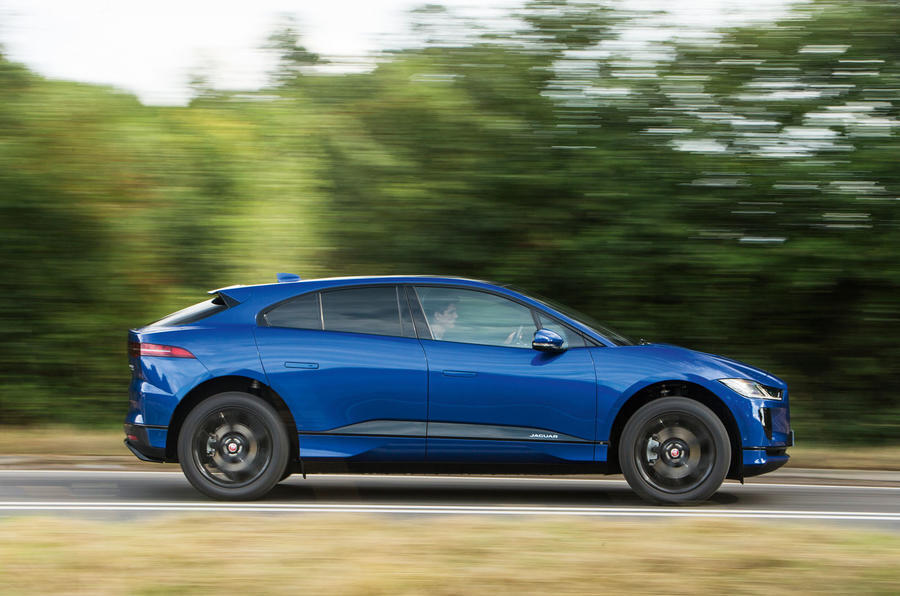
The first luxury electric car from a mainstream manufacturer to directly challenge Tesla at the high end, the I-Pace delivers on its brief with standout handling dynamics, first-rate interior quality and a striking design that’s slightly more SUV than saloon. It sets the standard for ride and handling among its all-electric peers, delivers strong performance from its twin 197bhp motors, and feels like a premium-branded electric car should: an unshackled, clean-sheet design.
The I-Pace will rapid charge at up to 100kW, but its slightly disappointing real-world range dents its potential as a long-distance tourer somewhat: 220 miles is not a result worth celebrating - and moreover the I-Pace's slightly buggy charging software seems to trip it up more often than other EVs are when you're out and about, trying to get plugged in. If you’re unlikely to rely on public rapid charging facilities or routinely to trouble the outer limits of the car’s electric autonomy potential, this a car we’d consider before any rival. It's that impressive to drive, as well as really interesting and appealing to behold. It just doesn't have such a complete array of qualities as the EQC in real-world use.
3. Ford Mustang Mach-E
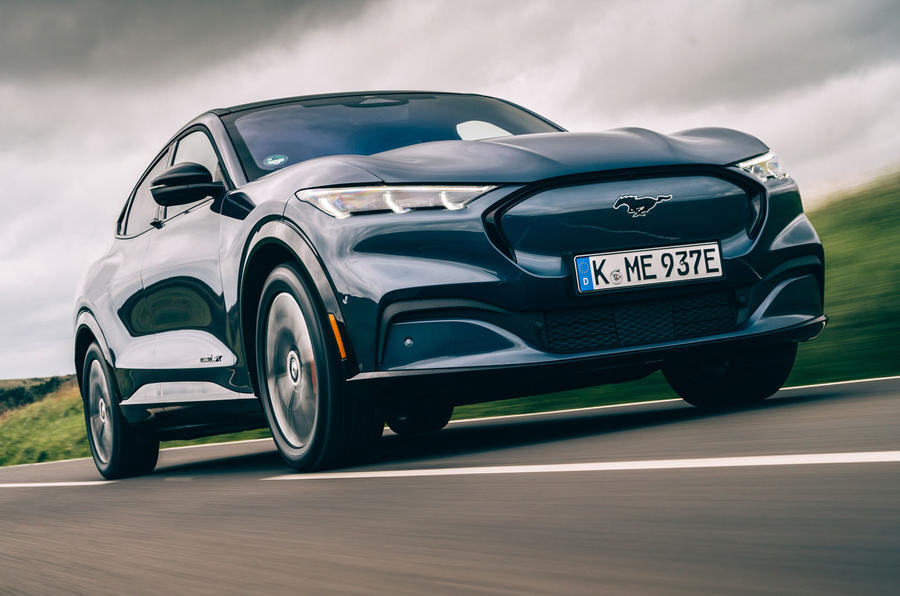
The Blue Oval is late to the full-sized electric car market, but has made something of a splash in any case by appropriating its much-loved Mustang sub-brand for its first battery-electric production model. The Mustang Mach-E isn't a square-jawed muscle coupé, though, but a proper five-seater with an appealing-looking crossover body style, as well as equally appealing real-world range potential and a more affordable price than some of the cars listed here.
Available from just over £40,000 in the UK - and in WLTP-accredited 379-mile Extended Range form from less than £47,000 after a UK government purchase incentive - the Mach-E clearly isn't cheap; and yet it's a proper, usable family car that beats premium rivals by up to 30% on both claimed range and value. We're yet to test one in detail on UK roads, but if that upper range figure delivers real-world autonomy of more than 300 miles on a charge, this will be a car that's easy to recommend for both rational and more 'emotional' reasons.
Perceived quality and luxury appeal are a little lower here than in the Mach-E's opponents, but practicality is good. The driving experience mixes punchy performance with nicely balanced handling, although ride refinement is firmer and less comfortable than some.
4. Tesla Model S
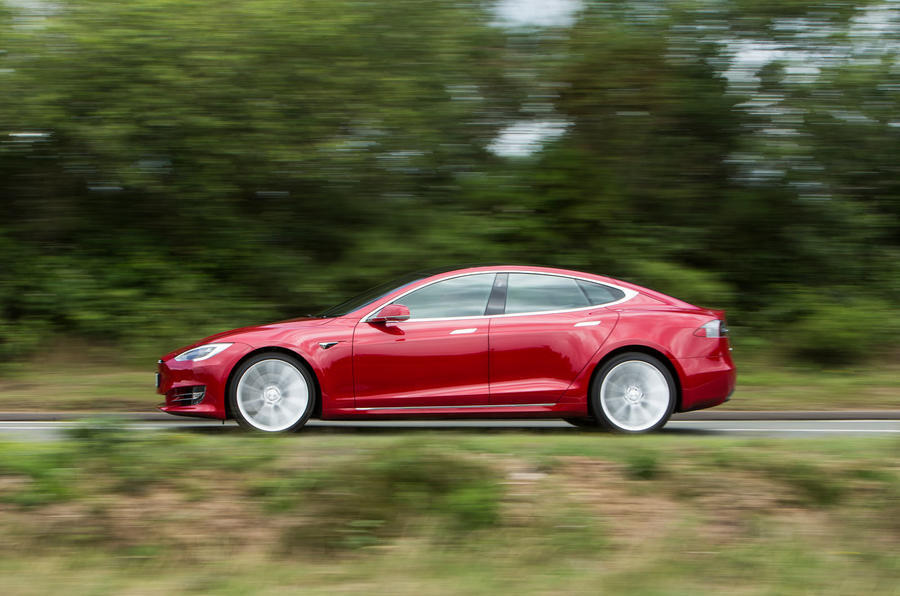
The car that persuaded the world an electric saloon could be a viable alternative to a combustion-engined one, and made the EV break into the luxury-car big time, is still our pick of Tesla’s model catalogue for its combination of performance, usability, price and range.
5. Tesla Model 3
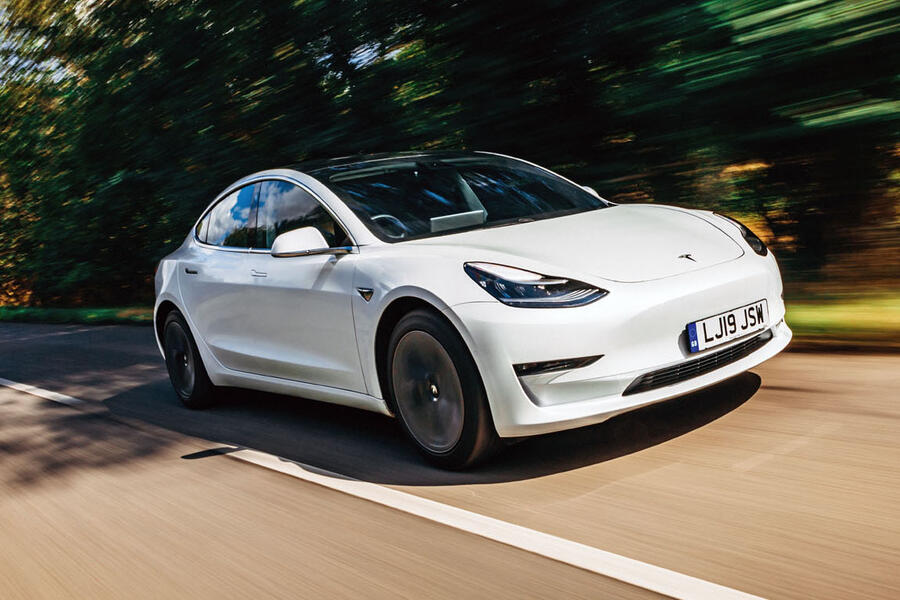
The biggest name in electric cars has its sights set on becoming a real global heavyweight with the Model 3 and spreading its wings to lower price points and greater annual production volumes than it has ever reached before.
By the time this car hits full stride, it’s aimed to transform its maker into a company turning out more than half-a-million cars a year – and it has now arrived in the UK market, already bringing Tesla ownership to a sub-£40,000-paying audience. In Standard Range form, meanwhile, the Model 3 is expected to make entry to the brand even more affordable very soon.

The biggest name in electric cars has its sights set on becoming a real global heavyweight with the Model 3 and spreading its wings to lower price points and greater annual production volumes than it has ever reached before.
By the time this car hits full stride, it’s aimed to transform its maker into a company turning out more than half-a-million cars a year – and it has now arrived in the UK market, already bringing Tesla ownership to a sub-£40,000-paying audience. In Standard Range form, meanwhile, the Model 3 is expected to make entry to the brand even more affordable very soon.
6. Polestar 2
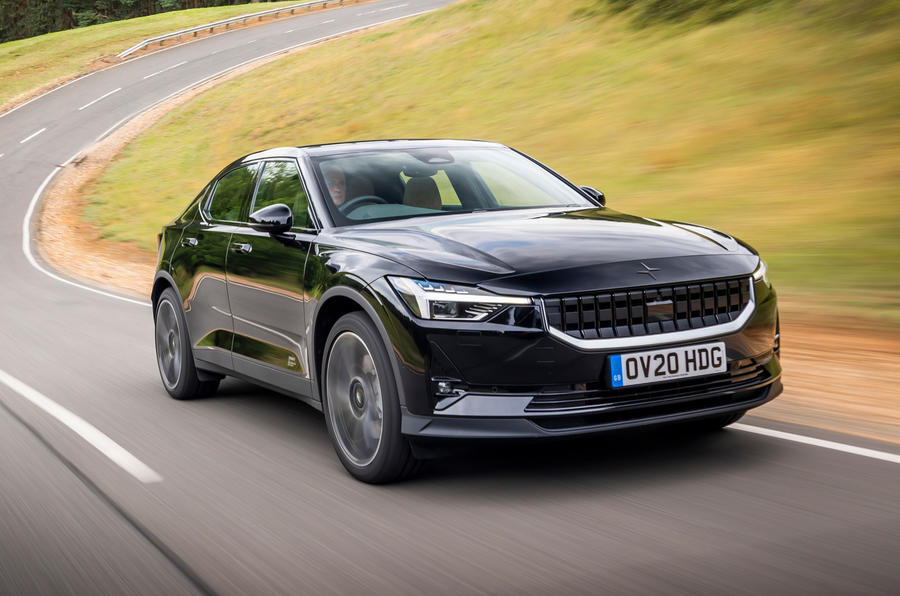
You may remember the Polestar 1: the muscular but oh-so-svelte 600bhp plug-in hybrid GT built by Volvo environmentally minded subsidiary. Well, it is the smaller and cheaper Polestar 2 that really demonstrates the kind of the car this young brand wants to make.
The Polestar 2's fundamental architecture is shared with the Volvo XC 40, but the stark exterior design, warm interior ambience, Android-developed infotainment and the 402bhp all-electric power train make it almost unrecognisable from any other Volvo-based car in terms of its character. The 78kWh battery is rated for 282 miles of W L T P range if you go for the Performance Pack, of which is delivered about 225 miles in real-world use; and the car can charge at speeds of up to 150kW. It does, however, lack the charging infrastructure of its closest rival, the Tesla Model 3.
7. Audi E-tron Quattro
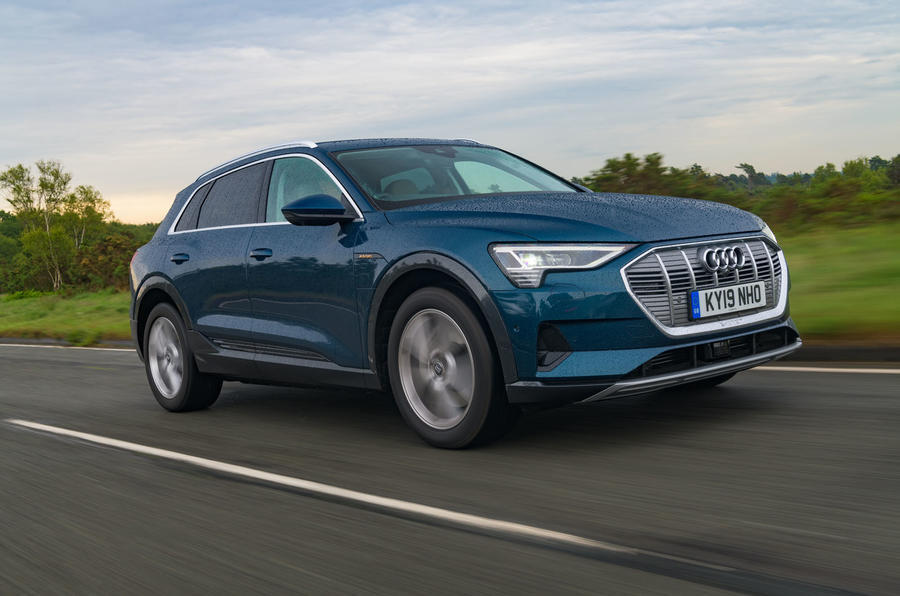
Audi has distilled the various qualities for which its revered brand is known and given all of them a new future-proofed home in its first series-production electric car: the E-tron Quattro SUV.
Sized to fit in between the firm’s existing Q5 and Q7 models but offering interior space to rival the latter, the E-tron is powered by a separate electric motor per axle and develops 402bhp and 487lb ft of torque in ‘boost’ driving mode. A Jaguar I-Pace is smaller, lighter, torque and faster – but the E-tron beats its close British rival on overall battery capacity, offering 95kWh of storage, which is good for a claimed W L T P combined range of 249 miles. In day-to-day use, expect to see between 210 and 220 miles of that before the battery goes flat.
Our first taste of the E-tron came in late 2018, on roads out in the Middle East, where the car impressed most with its classy and refined cabin ambience, its quiet cruising abilities and its Audi-typical apparent build quality. The driving experience was impressive, too, not least for its responsiveness and muscular feel up to motorway speeds, while precise and well-balanced handling completed the picture. Subsequent tests in the UK – not least with the recent Sport back variant – show that the car's ride quality is also a selling point.
8. BMW iX3
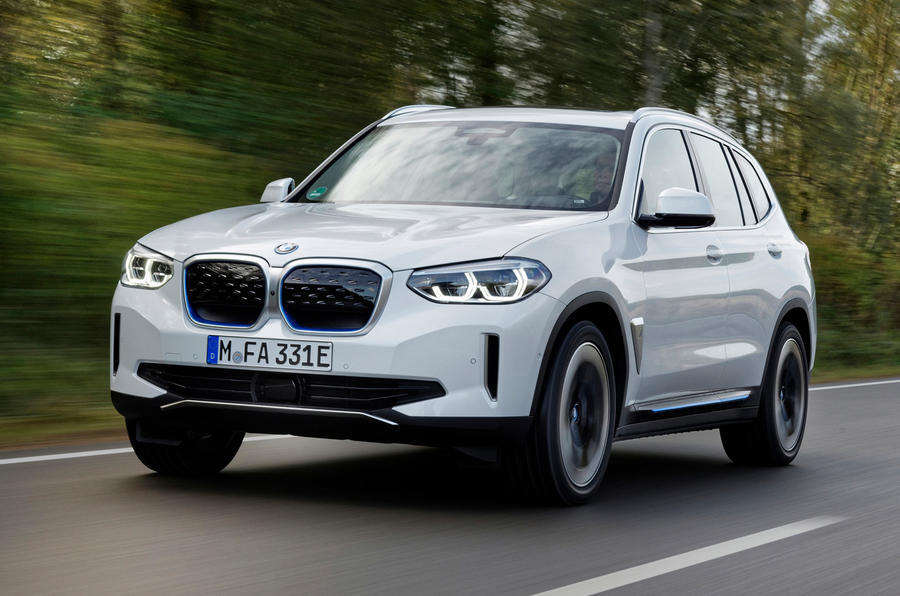
BMW has changed tack on its strategy for electrification. Having conceived the i brand to contain its very first EV and plug-in hybrid, it is now spreading electric cars among its wider model range, and the iX3 is the first of its new-wave EVs to hit the streets. It's also the first car that BMW has produced in China for export markets.
Using a rear-mounted motor offering up to 282bhp, and with a battery of 74kWh of usable capacity for a maximum claimed WLTP range of 285 miles, the iX3 isn't quite as fast or as long-legged as some of its rivals; and priced from £62,000, it isn't cheap, either. But its trump card may prove to be DC rapid charging potential of up to 350kW as an option, which can restore an empty battery to 80% in little more than half an hour where a compatible charger is available.
Practicality, handling and luxury-level refinement are all very creditable, but there may not be quite enough else to make this car stand out in a fast-growing growing EV segment.
9. Tesla Model X
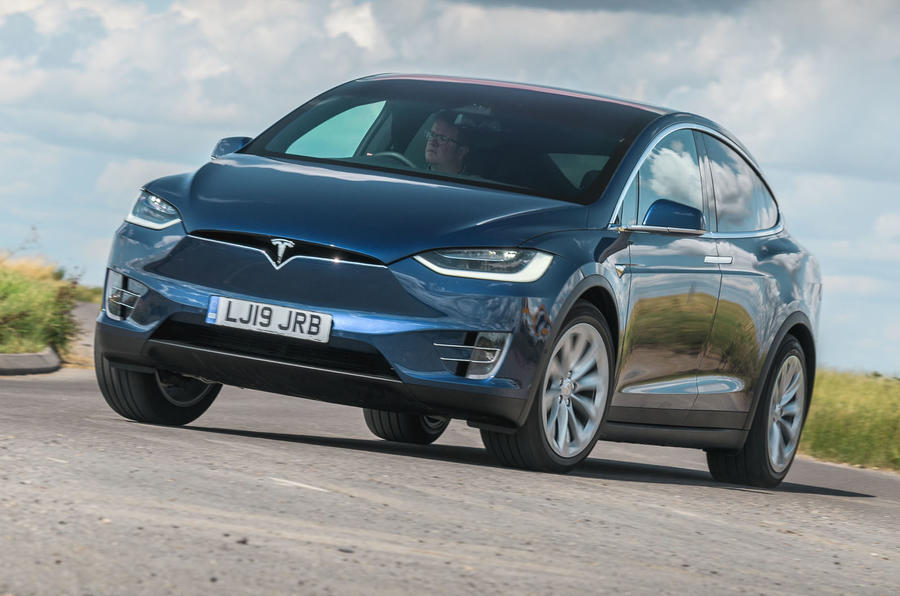
The sheer size and bulk of Tesla’s biggest model, the seven-seat Model X SUV, is what penalises it relative to its stablemates.
It’s currently in a league of one as far as all-electric seven-seat SUVs are concerned, so it seems a bit churlish to criticise it in some ways. Nonetheless, if you’re expecting Model S range and performance in a bigger, more versatile package, you’re headed for disappointment. Our testing suggests even range-topping 100kWh versions of the car won’t go much further than 230 miles at typical UK motorway speeds, with the cheaper ones struggling to pass 175 unless you’re conservative with your cruising speed.
Still, if that kind of range suits your purposes, you’ll find an awful lot to like here. With upper-level versions packing more than 600 horsepower, the Model X is well capable of beating 4.0sec to 60mph and can feel fast in a way you wouldn’t believe possible of such a large and heavy car. Handling is dulled somewhat by the car’s mass, but still more than credible enough to make the Model X feel coherent at pace. Cruising refinement and build quality come up a bit short, too.
Until you’ve seen a pair of all-electric gullwing doors opening automatically in a multi-storey car park and cleverly avoiding any nearby cars or masonry while doing it, though, you won’t fully appreciate the Model X’s party trick.
10. Lexus UX 300e

Will the all-electric UX work? Well, it's a £40,000 EV with a disappointing sub-200-mile WLTP range, decent but unexceptional performance, and an interior that doesn't really compete with bigger cars for passenger space. It does at least look typically distinctive, and it's a refined and pleasant drive around town and on shorter inter-urban trips.
It's not, perhaps, the best way to test the appetite of your customers for a really usable all-electric ownership proposition, though; and not the most convincing all-electric family option, either.
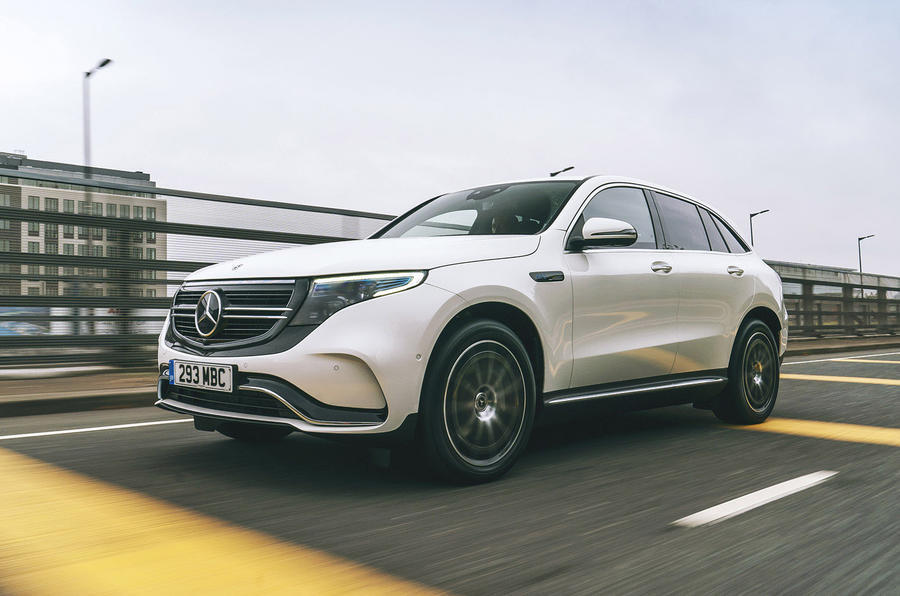
Comments
Post a Comment